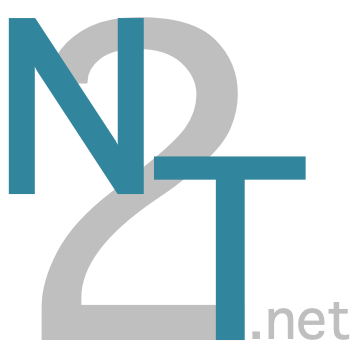The Digital Object Identifier System is for identifying content objects in the digital environment.
- Comment
The DOI resolution factsheet specifies that
https://doi.org/DOIis the preferred format:Users may resolve DOI names that are structured to use the DOI system Proxy Server (https://doi.org (preferred)). The resolution of the DOI name in this case depends on the use of URL syntax: the example DOI name doi:10.10.123/456 would be resolved from the address: "https://doi.org/10.123/456". Any standard browser encountering a DOI name in this form will be able to resolve it. The proxy service (both doi.org and the earlier but no longer preferred dx.doi.org) is accessible over IPv6, and supports DNSSEC. The proxy servers respond to HTTPS (preferred) as well as HTTP requests.
- Prefix
doi- Keywords
- bibliography centrally registered identifier subject agnostic
- Links
- Homepage
- Publications
- 2024 DOI URI Scheme
- References
- GitHub Issue https://github.com/biopragmatics/bioregistry/issues/287
- GitHub PR https://github.com/biopragmatics/bioregistry/pull/316
Identifier Standards
- Pattern for Local Unique Identifiers
-
Local identifiers in Digital Object Identifier should match this regular expression:
^10.\d{2,9}/.*$ - Example Local Unique Identifiers
-
10.1038/s41597-022-01807-3
Resolve
10.1016/j.foodchem.2008.11.065 Resolve
10.1093/acprof:oso/9780195159561.001.1 Resolve
10.1139/z02-135 Resolve
10.1333/s00897980202a Resolve
10.21/FQSQT4T3 Resolve - Pattern for CURIES
-
Compact URIs (CURIEs) constructed from Digital Object Identifier should match this regular expression:
^doi:10.\d{2,9}/.*$ - Example CURIEs
-
doi:10.1038/s41597-022-01807-3
doi:10.1016/j.foodchem.2008.11.065
doi:10.1093/acprof:oso/9780195159561.001.1
doi:10.1139/z02-135
doi:10.1333/s00897980202a
doi:10.21/FQSQT4T3 - Pattern for RDF URIs
- http://dx.doi.org/$1
- Example RDF URI
- http://dx.doi.org/10.1038/s41597-022-01807-3
- Namespace Embedded in LUI
-
This resource has been annotated by the Bioregistry as having a potential
namespace embedded in LUI.
This means that you may see local unique identifiers that include a redundant prefix and delimiter (also known
as a banana)
and therefore look like a CURIE. For , the banana looks like
doi:. Therefore, you may see local unique identifiers for this resource that look likedoi:10.1038/s41597-022-01807-3(instead of the canonical form10.1038/s41597-022-01807-3) and CURIEs for this resource that look likedoi:doi:10.1038/s41597-022-01807-3(instead of the canonical formdoi:10.1038/s41597-022-01807-3). The Bioregistry will automatically strip off the banana when standardizing local unique identifiers and CURIEs.
Contacts
- Contact
- Jonathan Clark 0000-0001-9551-9662
- Contributors
- contributor Chris Mungall 0000-0002-6601-2165 cmungall
- contributor Daniel Himmelstein 0000-0002-3012-7446 dhimmel
Metaregistry Digital Object Identifier
The metaregistry provides mappings between the Bioregistry and other registries. There are 12 mappings to external registries for this resource with 6 unique external prefixes.
| Registry Name | Registry Metaprefix | External Prefix | Curate |
|---|---|---|---|
BARTOC

|
bartoc |
20716
|
|
| BioContext | biocontext |
DOI
|
|
|
Biolink
|
biolink |
doi
|
|
Cellosaurus

|
cellosaurus |
DOI
|
|
|
EDAM
|
edam |
1188
|
|
FAIRSharing

|
fairsharing |
FAIRsharing.hFLKCn
|
|
GO

|
go |
DOI
|
|
Identifiers.org

|
miriam |
doi
|
|
N2T

|
n2t |
doi
|
|
|
Prefix Commons
|
prefixcommons |
doi
|
|
|
Wikidata
|
wikidata |
P356
|
|
|
Wikidata (E)
|
wikidata.entity |
Q25670
|
Providers
A provider turns a local unique identifiers from a resource into a URI. Many providers are also resolvable as URLs (i.e., they can be used in a web browser).
The local unique identifier 10.1038/s41597-022-01807-3 is used to demonstrate the providers
available for Digital Object Identifier. Some providers may use a different example, which is displayed in the table below.
A guide for curating additional providers can be found
here.
Extra Providers
Additional providers curated in the Bioregistry are listed here. These are typically inherited from Identifiers.org or Prefix Commons, and need extra curation.
| Code | Name | URL |
|---|---|---|
bio2rdf |
Bio2RDF | http://bio2rdf.org/doi:10.1038/s41597-022-01807-3 |
doi_http |
Digital Object Identifier | http://doi.org/10.1038/s41597-022-01807-3 |
dx_doi_http |
Digital Object Identifier | http://dx.doi.org/10.1038/s41597-022-01807-3 |
dx_doi_https |
Digital Object Identifier | https://dx.doi.org/10.1038/s41597-022-01807-3 |
miriam_legacy |
Legacy MIRIAM URI | http://identifiers.org/DOI/10.1038/s41597-022-01807-3 |
scholia |
Scholia | https://scholia.toolforge.org/doi/10.1038/s41597-022-01807-3 |